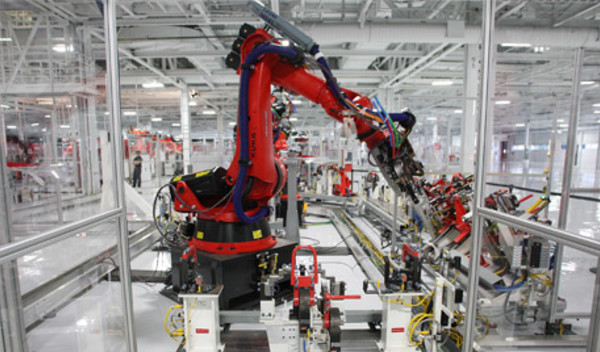

Technology comes in many forms, but one of the growing areas of interest this year is the robotics and automation industry.
At the recent World Economic Forum (WEF) in Davos, a key theme was the impact of the ‘Fourth Industrial Revolution’ on sectors, jobs and the world at large. Klaus Schwab, founder and executive chairman of the WEF, has described it as being characterised “by a fusion of technologies that is blurring the lines between the physical, digital and biological spheres”.
This includes “emerging technology breakthroughs in fields such as artificial intelligence, robotics, the Internet of Things, autonomous vehicles, 3D printing, nanotechnology, biotechnology, materials science, energy storage and quantum computing”.
But how much of this is really a new theme?
Alastair Unwin, manager of the Neptune Global Technology fund, points out: “Robotics is a fairly ‘old’ industry by technological standards, but we have seen a material acceleration worldwide in the adoption of robotic technology outside early users in automobile and electronics manufacturing.
“This has been driven by growing real wages in manufacturing hubs – especially China – the ongoing price declines in the hardware and enabling software of robotic equipment itself and improvements in adjacent technologies like machine vision, sensor and gripping technologies.”
While some investors may still be wary of entering into a new technology theme, Aneeka Gupta, associate and commodity and equity strategist at ETF Securities, points out that although valuations in robotic stocks “looked excessive [relative to the broader market] in 2010, valuations came down in 2011”.
She adds: “The ‘hype’ phase re-emerged in 2014, but price-to-earnings ratios have come down significantly since then and valuations are below the broader market. We believe with valuations so low, there is a strong entry point for investors to enter the megatrend in robotics.”
Encouraging signs that the market is in the early phase of such a ‘megatrend’ “and therefore opportunities in the sector are far from saturated”, says Ms Gupta, include a pick-up in merger and acquisition activity and governments focusing on robotics and automation to drive national competitiveness.
But robotics itself is a broad term for a varied and constantly evolving industry.
Jeremy Gleeson, manager of the Axa Framlington Global Technology fund, notes that there is often a preconception of what a robot is, mainly via either the robot arms seen in car plants or the TV/film portrayals of humanoid devices.
“We’ve taken the view that a robot is a device or a feature that has certain autonomous elements to it where decisions can be made independently and outcomes produced as a result of those decisions. So the theme of robotics really is proliferating through a number of different end markets,” Mr Gleeson explains.
“One of the more high-profile ones is in the car – with functions or features where it has the ability to make certain decisions based on its environment and the various inputs it gets from sensors all around it. Automatic braking would be an example.
“In terms of robots they’ve been around for a long time, but we think the whole market is changing. They’re going from being devices that we use predominantly in manufacturing or repetitive processes, to being combined with more and more intelligence to become useful in many different ways. A lot of that intelligence is being driven by state-of-the-art semi-conductors and software.”
Richard Lightbound, partner and chief executive at Robo Global, says the influence of robotics and automation extends beyond the industrial and manufacturing sectors.
“The most significant growth is expected from personal and services sectors, with 17.4 per cent and 12.3 per cent compound annual growth rates predicted between 2010 and 2025, according to Boston Consulting Group. Robotics, automation and artificial intelligence have started to penetrate every aspect of our daily lives including work, home, entertainment, security and healthcare.”
But Mr Gleeson points out that while there is good secular growth within the industry, “we have to bear in mind that cyclicality doesn’t go away completely. From an investment perspective, the narrower the universe of investments the more risk you take on board. So while [robotics] is a market we’re participating in, we still have the broader diversification, giving investors exposure to a variety of markets.”
Nyree Stewart is features editor at Investment Adviser




